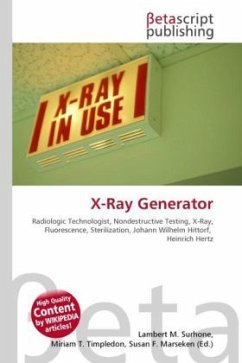
Radioisotope Piezoelectric Generator
Versandkostenfrei!
Versandfertig in 6-10 Tagen
49,99 €
inkl. MwSt.

PAYBACK Punkte
25 °P sammeln!
Please note that the content of this book primarily consists of articles available from Wikipedia or other free sources online. A Radioisotope piezoelectric generator converts energy stored in the radioactive material directly into motion to generate electricity by the repeated deformation of a piezoelectric material. This approach creates a high-impedance source and, unlike chemical batteries, the devices will work in a very wide range of temperatures. A piezoelectric cantilever is mounted directly above a base of the radioactive isotope nickel-63. All of the radiation emitted as the millicur...
Please note that the content of this book primarily consists of articles available from Wikipedia or other free sources online. A Radioisotope piezoelectric generator converts energy stored in the radioactive material directly into motion to generate electricity by the repeated deformation of a piezoelectric material. This approach creates a high-impedance source and, unlike chemical batteries, the devices will work in a very wide range of temperatures. A piezoelectric cantilever is mounted directly above a base of the radioactive isotope nickel-63. All of the radiation emitted as the millicurie-level nickel-63 thin film decays is in the form of beta radiation, which consists of electrons. As the cantilever accumulates the emitted electrons, it builds up a negative charge at the same time that the isotope film becomes positively charged. The beta particles essentially transfer electronic charge from the thin film to the cantilever. The opposite charges cause the cantilever to bend toward the isotope film. Just as the cantilever touches the thin-film isotope, the charge jumps the gap. That permits current to flow back onto the isotope, equalizing the charge and resetting the cantilever.












